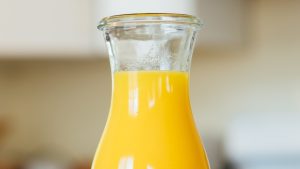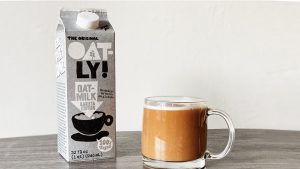The pack is back
There’s nothing like a recession for encouraging brand managers to take a cold, hard look at their offer. When times are good and there’s loads of money sloshing about, perhaps we’re all a little guilty of ‘relaxed’ thinking.
For brand managers, that might mean acting like a kid in a sweet shop when it comes to strategy – which often sees the pack identity deprioritised. Why focus on that when there are websites to build, blogs to write, email- and video-marketing initiatives to push and multi-platform ad campaigns to organise, right?
Wrong. Because it all starts with the pack. But often it’s only when we’re experiencing hard times and there’s less cash to splash on multichannel options that the focus returns to a brand’s heartland: its packaging identity.
In fact, packaging is so integral to what a product is and how it appeals to its audience that the whole brand world should be built around the pack, and not vice versa.

From commodity to covetable
Without a strong packaging identity a product is little more than a commodity. Water is just water until it’s Liquid Death, a US brand on an ‘evil mission’ to get people to generate less plastic pollution. Toilet paper is just toilet paper until it becomes a way for the purchaser to demonstrate how much they care about their family’s posteriors. Fifty years down the line, Andrex’s Labrador pup still provides emotional symbolism like no other brand of loo roll. And a soft drink is just a soft drink until it becomes Kinnie, a Maltese brand that celebrates a unique national identity and Mediterranean spirit.
What these brands do with their on-pack identities is set themselves apart from the rest. They give their audiences a ‘reason to believe’. It’s no longer about ‘what’ the consumer is buying, it’s about ‘why’.

Building strong foundations
Think of the packaging as the brand’s nucleus. It provides the starting point from which everything else can grow. By failing to invest in that step sufficiently, brands often store up trouble for later on.
Tropicana provides a case in point. In 2009, when the PepsiCo-owned brand replaced its much-loved orange and straw image with a clear glass of juice, it underestimated the audience’s connection with the original packaging identity – and sales dropped by 20%. The redesign illustrated the considerable power of packaging, albeit in a negative context, and the importance of a strong brand foundation.
Even the slick ‘squeeze’ ad campaign designed to accompany the relaunch wasn’t able to reverse plummeting sales – because it was built on shaky foundations.

Conversely, alt-milk brand Oatly rocked the world when it updated its packaging with a tongue-in-cheek, quirky approach. The brand has been around since 1990, but it was only in 2014 when it shifted its on-pack identity from professional and ‘worthy’ to cheeky and fresh, with graphic lettering and sustainable messaging that didn’t take itself too seriously, that its fortunes turned around. It worked: 2021 was a record year for Oatly, with revenue growth greater than 50% year-on-year.
In the world of branding and marketing, not all channels are created equal. When budgets are tighter, it’s important to focus on the ones that carry the most weight – and packaging has to be number one.

Getting priorities right
For some business owners, investing in their products’ pack identities during an economic downturn can seem a little counterintuitive. There may be short-term cost concerns and an automatic reaction to cut back, but this isn’t the best course of action. The pack is the most tangible link to the consumer; it has the power to build trust and loyalty. What could be more important when the chips are down?
Whatever the economic forecast, no successful brand strategist takes their eye off the packaging identity. Because without that big foundational idea, all the extrapolations, the celebratory iterations, ad campaigns, etc, can feel a bit weak – and brands risk damaging consumer trust and belief.
During this downturn, when brand managers double down and devote time to their overall strategies, maybe the first thing they should do is remember what the most important element in the room is: the pack.
If you want to talk packaging design, get in touch with our MD, Christopher Schilperoort on christopherschilperoort@bluemarlinbd.com
